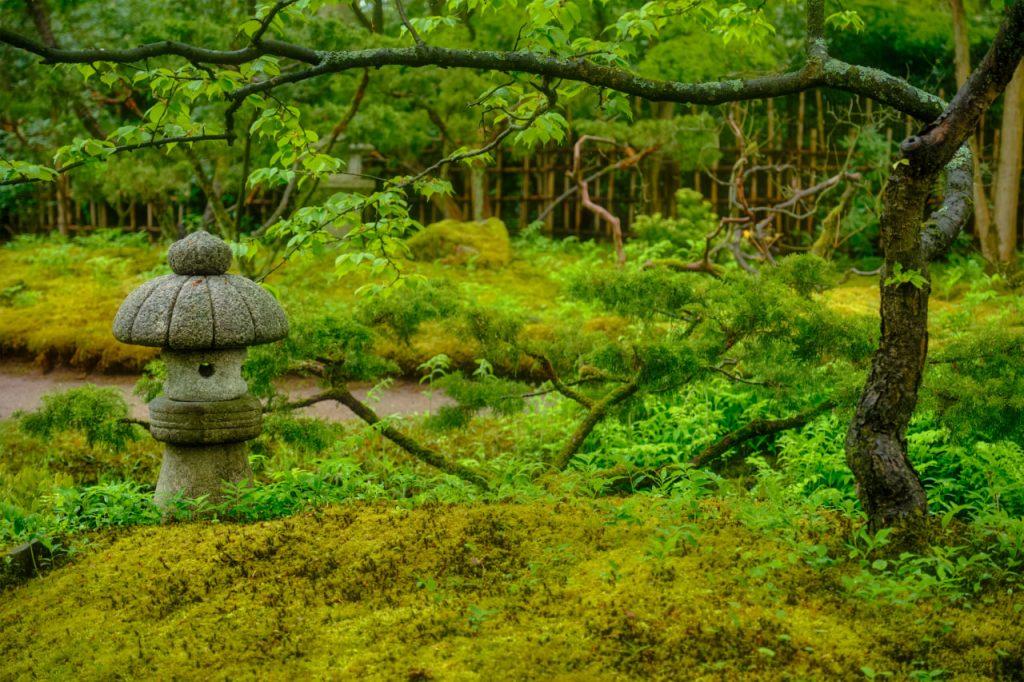In a world that often seeks sleek surfaces, bright finishes, and permanent perfection, the wabi-sabi garden invites us to look again. It teaches us to see value not in the new, but in the naturally worn — not in what is flawless, but in what is real. And at the heart of this quiet wisdom are the materials we choose.
Wabi-sabi gardens are crafted from elements that come from the earth and return to it. Stone, wood, clay, copper, and iron — these materials don’t just build a garden, they shape its spirit. They change with time, recording the passage of seasons in their textures. A bamboo fence will dry and crack. A stone lantern will gather moss. A clay pot might chip or fade. Yet none of these changes diminish their beauty — they deepen it.
This garden philosophy honors what most others try to hide: aging. A weathered stone step or a rusted spout isn’t a flaw — it’s a story. The green stains of rain on wood, the soft crumble of a terracotta edge, the gentle tilt of something settling into the soil — all of these are part of the aesthetic. They are signs of life, of impermanence, of being in harmony with the world around us.
Choosing natural materials for your garden isn’t just a stylistic decision — it’s a philosophical one. You are choosing to work with nature, not against it. You are accepting that nothing lasts forever, and that everything changes. A cedar bench left in the sun will silver with time. A rough stone will grow smoother underfoot. Even the placement of objects can suggest a quiet history — as if the garden has been growing and shifting long before you arrived.
In the practice of wabi-sabi, maintenance is not about restoring things to a “like new” condition. It’s about care, attention, and presence. Clean gently, repair thoughtfully, and let go of the need to control every detail. When leaves fall into the pond, let them float. When lichen creeps onto the stepping stones, let it grow. Your garden will become a place of reflection — not only of the world’s natural rhythms but of your own inner state.
Wabi-sabi reminds us that beauty is not static. It is born of use, time, and weather. It’s in the soft curve of erosion, the stain of rain, the shadow of age. A wabi-sabi garden never looks finished — it always looks alive.
So as you choose materials for your garden, choose those that will tell a story over time. And then let time do its work. Because sometimes, the most beautiful moments are those that arrive quietly, with age, and stay long after the eye has passed by.

